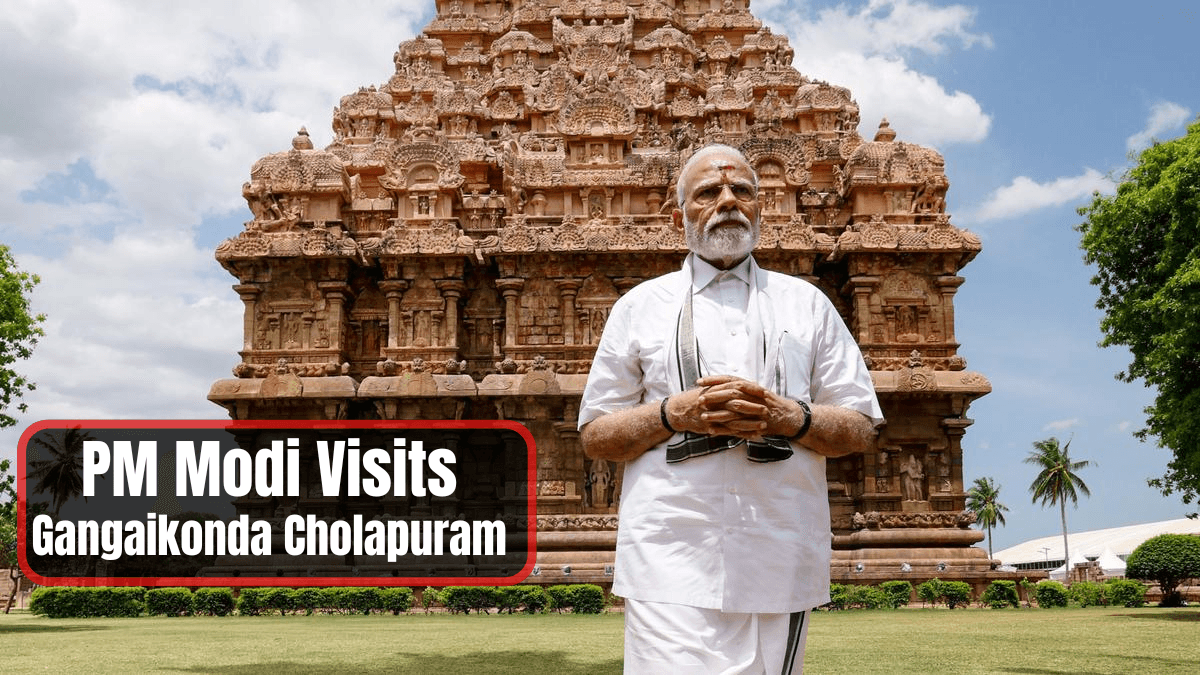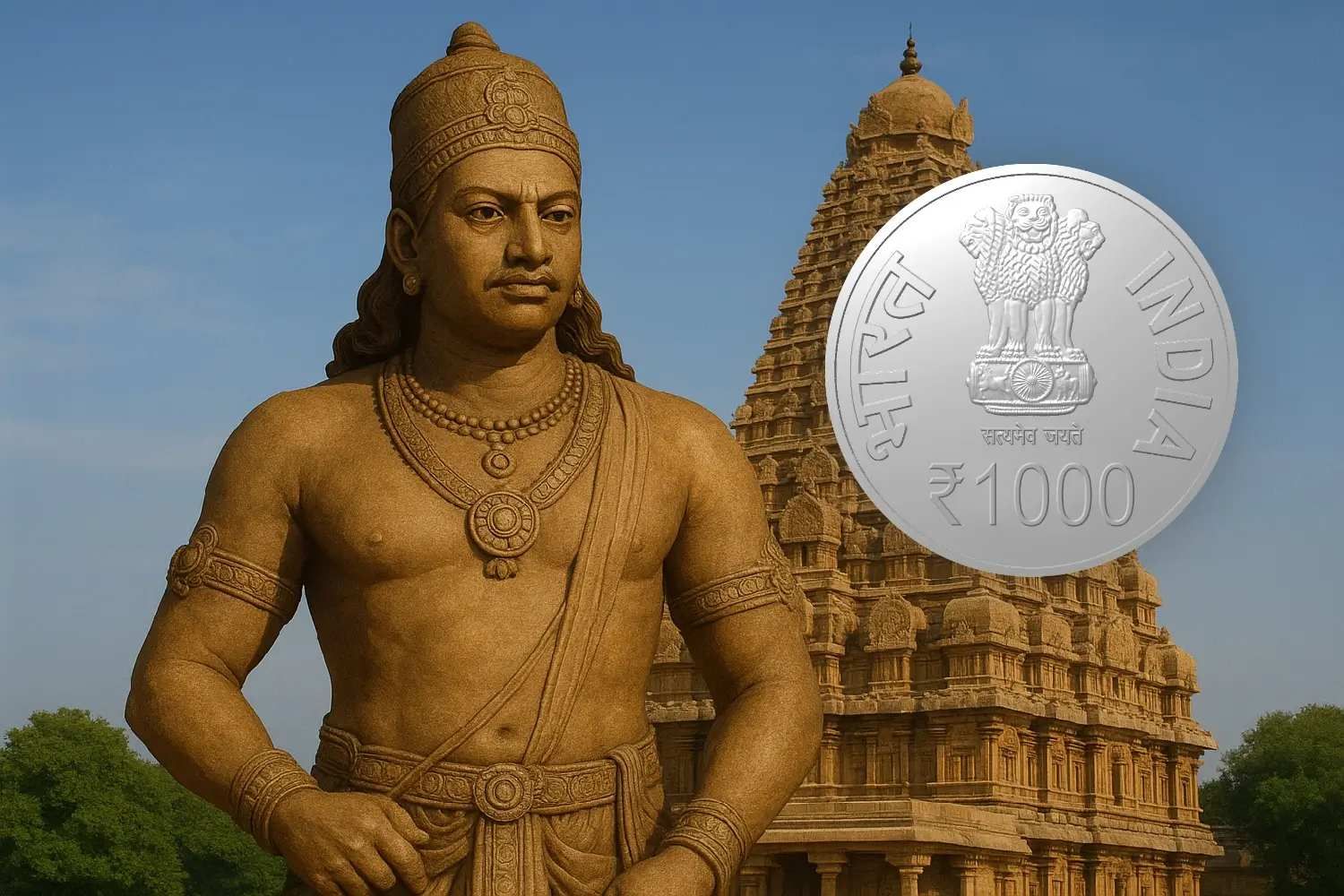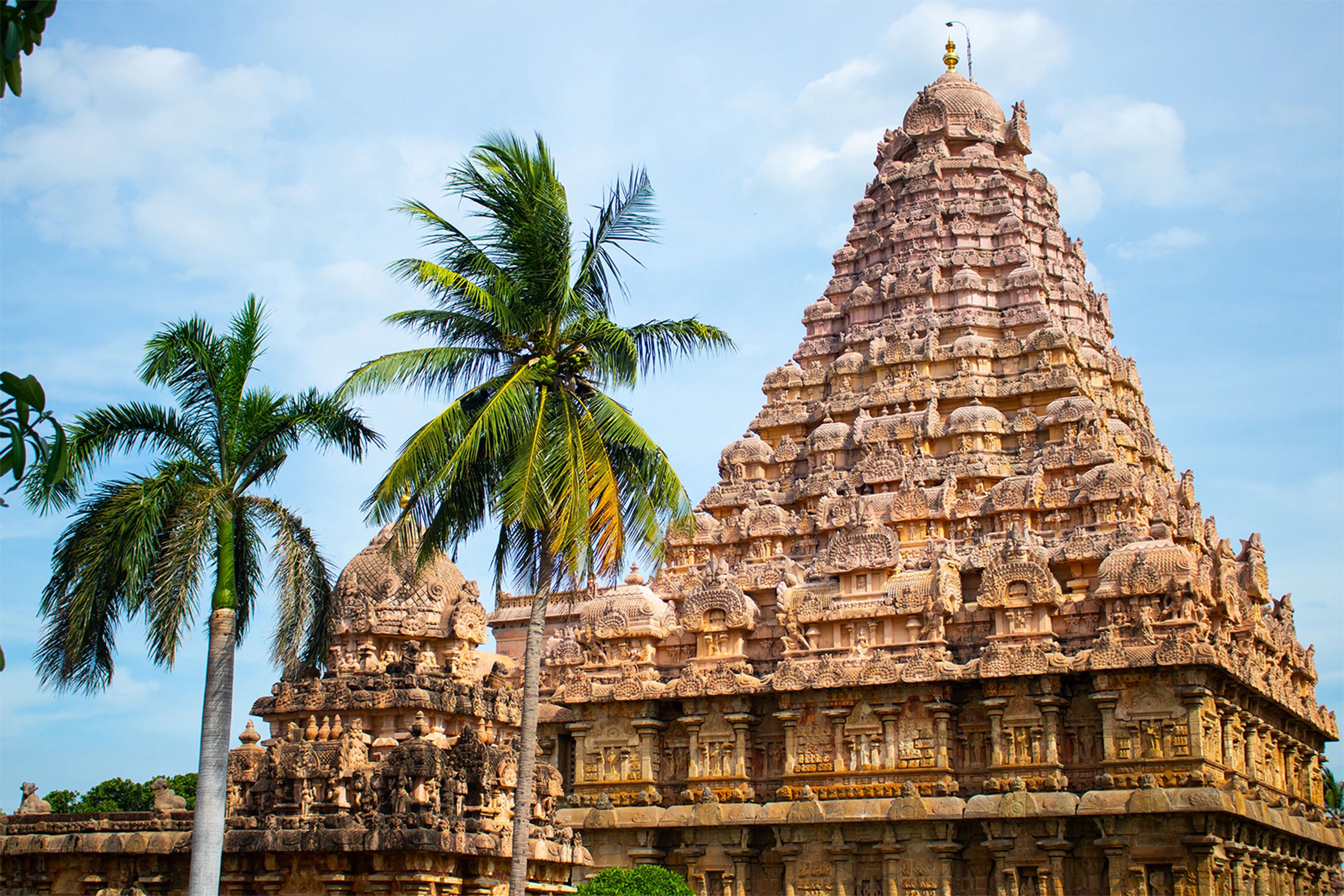PM Modi at Gangaikonda Cholapuram: Understanding the Chola Legacy of Bharat
Jul, 2025
•5 min read
Why in the News?

Recently, Prime Minister Narendra Modi visited Gangaikonda Cholapuram in Tamil Nadu during the closing ceremony of the Aadi Thiruvathirai festival to commemorate the birth anniversary of Emperor Rajendra Chola I.
Why Cover This Topic for UPSC?
- Important for Prelims & Current Affairs
- Relevant for Ethics paper.
- Relevant for GS Paper I (History & Art, and Culture)
- Relevant for GS paper II (Polity and Governance).
- Essay topics related to “Role of History in Nation-Building”.
Understanding The Chola Dynasty
During the Sangam Age, South India was ruled by three powerful dynasties: the Cheras, Cholas, and Pandyas. Their history is recorded in the Sangam literature and writings of foreign authors, such as Megasthenes and Ptolemy, as well as inscriptions like Ashoka's edicts and Kharavela’s Hathigumpha inscription.
- By the 9th century AD, the Pallavas of Kanchi, the Chalukyas of Badami, and the Pandyas of Madurai had become major powers.
- The Cholas, who were earlier minor rulers in Uraiyur after the Sangam period, rose to prominence again.
- They established a strong empire in South India with Tanjore as their capital. Vijayalaya Chola founded the Imperial Chola Empire.
- Rajaraja Chola I, also known as Arulmozhi Varman, ruled from 985 to 1014 AD and was one of the greatest Chola rulers.
- His son Rajendra Chola I succeeded him in 1014 AD and became one of the most powerful kings and military leaders in South Indian history.
Who Was Rajendra Chola I?
Rajendra I (1014–1044 CE) was a Chola emperor, often referred to as Rajendra the Great.
- His titles included Gangaikonda Cholan (“Conqueror of the Ganges”) and Kadaram Kondan (“Subjugator of Kedah” in Srivijaya), reflecting his victories in Bengal and the Malay world.
- Under his rule, the Chola Empire reached its zenith, extending across South India and into the Indian Ocean.
- He was the first Indian king to lead overseas military expeditions (Sri Lanka, Maldives, Southeast Asia).
Key Achievements
1. Maritime & Military Conquests:
- Reasserted control over the Chera and Pandya regions; annexed Sri Lanka’s Ruhuna (1017 CE)
- Conquered distant islands (Maldives, Lakshadweep, Nicobar).
- Led a naval expedition against Srivijaya (~1025 CE), capturing parts of the Malay Peninsula, Java, and Sumatra.
- Defeated the Pala dynasty in Bengal. The Ganges water was brought back to his capital, giving him the title “Gangaikonda”.
2. Capital & Monuments:
- Founded the Capital Gangaikonda Cholapuram (~1025 CE) and built its grand Shiva temple (Gangaikondeswaram).
- Constructed the large “Chola Gangam” reservoir (Ponneri lake) to irrigate the region.
- Promoted Shaivism (building temples and patronizing poets) and tolerated Buddhism (building stupas in India and Southeast Asia).
Also read: June 2025 Current Affairs Magazine
Chola Administration and Governance
The Chola dynasty built a highly organized and efficient administrative system that helped them rule a vast empire smoothly for centuries.
- Centralized Monarchy: The King (Chakravartin) ruled with a council of ministers. Top officials (peruntaram) and lower officials (siruntaram) managed the administration.
- Provinces: Empire divided into 9 mandalams (provinces); each split into kottams (valanadus) → nadus (districts) → urus (villages).
- Revenue System: Land tax (~⅙ of produce) was the main revenue. Taxes were also collected on trade (customs), salt, forests, professions, etc.
- Local Self-government: Nadu assemblies (each led by a nattar or nattamai) managed groups of villages. Village grama sabhas handled local affairs (infrastructure, markets), and committees (variyams) oversaw specific duties.
- Trade and Guilds: The Cholas fostered merchant guilds (nanadesi, nagaram) that dominated trade. Key ports such as Nagapattinam and Kaveripattinam facilitated commerce with West Asia, China, and Southeast Asia.
Also read: What is the Indus Valley Civilization? The History, Location, and Artifacts
Contributions to Art, Architecture & Literature
The Chola rulers left a lasting legacy in art, architecture, and literature, blending spiritual devotion with technical brilliance to inspire generations.
1. Bronze Masterpieces: Chola artisans cast extremely beautiful bronze icons like Nataraja, Parvati, and Vishnu using the lost-wax (cire-perdue) technique.
2. Temple Architecture:
- Vimana (Sanctum Tower): A tall, pyramid-shaped tower built above the main shrine, topped with a dome and decorative finial (kalasha).
- Gopuram (Entrance Tower): Big and grand gateway towers, decorated with detailed statues of gods and mythical animals.
- Mandapas (Halls): Pillared halls used for prayers, gatherings, and dance, often carved with animal and flower designs.
- Temple Tank: A big water pond inside the temple used for holy baths and local gatherings, mixing daily life with rituals.
- Material and Size: Temples were made of granite instead of bricks and became much larger, like the Brihadeesvara and Gangaikonda Cholapuram temples.
3. Literature:
- Works like Kamban’s Ramavataram (Tamil Ramayana) and Jayakondar’s Kalingattuparani celebrated royal victories with literary flair.
- Devotional songs (Thevaram by Sambandar, Appar, and Sundarar; Nalayira Divya Prabandham by Alvars) flourished under Chola patronage.
- Sekkilar’s Periyapuranam narrates the lives of sixty-three Shaiva saints, reinforcing religious identity and cultural memory.
Building upon this rich legacy, the recent visit of the Prime Minister has further highlighted its cultural and historical importance.
PM Modi’s Visit to Gangaikonda Cholapuram
- PM Modi visited Gangaikonda Cholapuram for Rajendra I birth anniversary (Aadi Thiruvathirai), bringing national attention to Chola history.

- He released a commemorative coin in Rajendra I (depicting his achievements like the Gangaikonda temple and lake) and announced statues of Rajaraja and Rajendra in Tamil Nadu.
- He drew parallels between Chola governance and modern democracy, notably the Kudavolai system, calling it an early form of grassroots democracy predating Western models.
- He emphasized the Shaivite heritage (installation of the Sengol in Parliament, Tamil Nadu’s continuing temple traditions) as a living link to Chola-era civilization.
Way Forward
The PM concluded that India should pursue “Vikas Bhi, Virasat Bhi” led development along with preserving heritage. The Chola example brings a new energy to Bharat: invest in strength (navy, economy), empower local self-government, and value cultural heritage.
Modern India can draw many lessons from the Chola achievements:
- Local Governance: Cholas had strong village assemblies alongside a central authority.
- Fair Elections: Used a "ballot pot" system for transparent local elections.
- Maritime Strategy: Rajendra I prioritized naval strength and overseas ties, and today’s Sagarmala mirrors the Chola focus on maritime power.
- Sustainable Water Management: The Cholas built extensive irrigation tanks (e.g., Ponneri lake) and managed rivers ingeniously.
The Chola dynasty’s ancient Indian heritage of strong governance, vibrant culture, and maritime excellence still inspires India today.
Unlock your UPSC success with SuperKalam! Get instant doubt clearance, customized study plans, unlimited MCQ practice, and fast Mains answer feedback.
Don’t miss out on daily practice questions, class reminders, revision notes, and mentorship tips. Join our community of serious aspirants here: SuperKalam Telegram Channel.
Explore SuperKalam's Resources and set yourself on the path to success!


![Aravali Range in News [UPSC 2025]](/_next/image?url=https%3A%2F%2Fblog-media.superkalam.com%2Faravali_hills_f4a51f37bf.jpeg&w=3840&q=75)
![MGNREGA Vs VB-G RAM G [UPSC 2025]](/_next/image?url=https%3A%2F%2Fblog-media.superkalam.com%2FMGNREGA_vs_GRAMG_ea46241736.jpeg&w=3840&q=75)